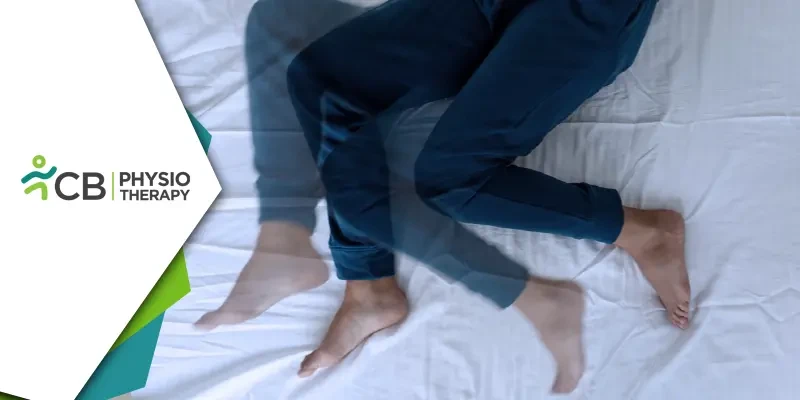Restless Leg Syndrome (RLS), also known as Willis-Ekbom Disease, is a neurological disorder that causes an uncontrollable urge to move the legs, often accompanied by uncomfortable sensations such as tingling, itching, or throbbing. Symptoms typically worsen during periods of rest or inactivity, especially in the evening or night, leading to sleep disturbances and a reduced quality of life.
While the exact cause of RLS is not entirely understood, it has been linked to genetic factors, iron deficiency, dopamine imbalance, and certain medical conditions such as diabetes, kidney disease, and neuropathy. Lifestyle factors like excessive caffeine intake, stress, and prolonged inactivity can also contribute to symptom severity.
Role of Physiotherapy in Managing RLS
Physiotherapy plays a significant role in alleviating RLS symptoms by improving circulation, reducing muscle tension, and enhancing overall mobility. A well-structured physiotherapy program can help patients manage discomfort and promote better sleep patterns. Here are some physiotherapy approaches beneficial for RLS:1. Stretching and Flexibility Exercises
Gentle stretching of the leg muscles, particularly the calves, hamstrings, and quadriceps, can help reduce muscle tightness and discomfort. Recommended stretches include:
a. Calf Stretch: Standing or seated calf stretches to improve flexibility.
b. Hamstring Stretch: Lying or seated hamstring stretches to relieve tension.
c. Quadriceps Stretch: Hold the ankle behind the body to stretch the front thigh muscles.
2. Aerobic and Strength Training
Regular physical activity helps regulate dopamine levels and enhances circulation, reducing RLS symptoms. Low-impact aerobic exercises such as walking, cycling, and swimming can be particularly beneficial. Strength training focusing on the lower limbs can also improve muscle function and reduce discomfort.
3. Massage Therapy and Manual Techniques
Physiotherapists may use massage and soft tissue mobilization techniques to improve blood flow and relax tight muscles. These therapies can help decrease restlessness and improve sleep quality.
4. Nerve Mobilization Techniques
In cases where nerve compression contributes to RLS symptoms, physiotherapists may perform neural mobilization techniques to relieve nerve irritation and improve function.
5. Heat and Cold Therapy
Applying heat packs or cold compresses to the legs can help soothe discomfort and relax muscles. Alternating between heat and cold therapy may also reduce inflammation and improve circulation.
6. Postural and Ergonomic Advice
Physiotherapists can provide guidance on maintaining proper posture while sitting, standing, or sleeping to minimize stress on the legs. Ergonomic adjustments at work or home can also help prevent symptom aggravation.
7. Breathing and Relaxation Techniques
Stress and anxiety can worsen RLS symptoms. Physiotherapists may incorporate relaxation techniques such as diaphragmatic breathing, progressive muscle relaxation, and mindfulness exercises to help manage stress and improve sleep quality.
8. Electrical Stimulation and TENS Therapy
Transcutaneous Electrical Nerve Stimulation (TENS) has been found effective in reducing RLS symptoms by promoting circulation and altering pain perception. A physiotherapist can guide the appropriate settings for home use.
Restless Leg Syndrome can significantly impact daily life, but physiotherapy offers a holistic approach to managing symptoms effectively. Through stretching, exercise, manual therapy, and relaxation techniques, physiotherapists can help patients achieve symptom relief and improve their overall well-being. If you experience persistent RLS symptoms, consulting a physiotherapist for a personalized treatment plan can be a crucial step toward better management.

